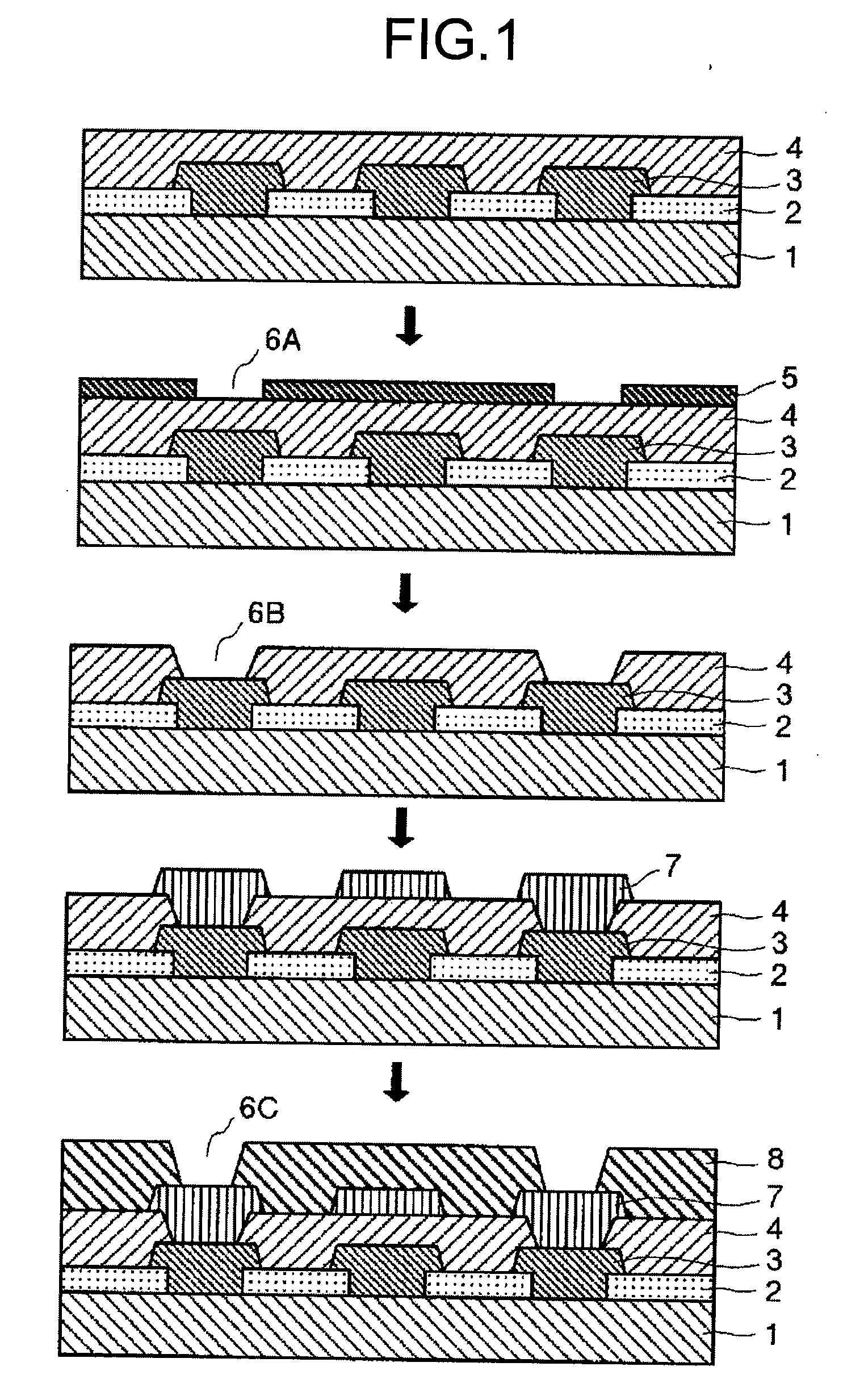Negative-type photosensitive resin composition, method for forming patterns, and electronic parts
a technology of negative-type photosensitive resin and composition, which is applied in the direction of photosensitive materials, instruments, photomechanical equipment, etc., can solve the problems of reducing the yield limited physical properties of the final product, and limited polymer structure to be used, etc., and achieves excellent sensitivity, resolution and heat resistance
- Summary
- Abstract
- Description
- Claims
- Application Information
AI Technical Summary
Benefits of technology
Problems solved by technology
Method used
Image
Examples
examples 1 to 24
[0061]The present invention will be specifically described below with reference to the following Examples.
synthesis example 1
Synthesis of Polybenzoxazole Precursor
[0062]In a 0.5 liter flask equipped with a stirrer and a thermometer, 15.48 g (60 mmol) of 4,4′-diphenyl ether dicarboxylic acid and 90 g of N-methylpyrrolidone were placed, the flask was cooled to 5° C., then 23.9 g (120 mmol) of thionyl chloride was dropped, and the mixture was reacted for 30 minutes to yield a solution of 4,4′-diphenyl ether tetracarboxylic acid chloride. Then, in a 0.5 liter flask equipped with the stirrer and the thermometer, 87.5 g of N-methylpyrrolidone was placed, 18.30 g (50 mmol) of bis(3-amino-4-hydroxyphenyl)hexafluoropropane and 2.18 g (20 mmol) of m-aminophenol were added thereto and stirred and dissolved, subsequently 9.48 g (120 mmol) of pyridine was added, then a solution of 4,4′-diphenyl ether dicarboxylic acid chloride was dropped over 30 minutes with keeping the temperature at 0 to 5° C., and the mixture solution was continued to be stirred for 30 minutes. The solution was poured in 3 liters of water, a preci...
synthesis example 2
[0063]Polyhydroxyamide was synthesized in the same way as in Synthesis Example 1, except that 50 mol % of 4,4′-diphenyl ether dicarboxylic acid used in Synthesis Example 1 was replaced with cyclohexane-1,4-dicarboxylic acid. The weight average molecular weight of resulting polyhydroxyamide (hereinafter referred to as Polymer II) obtained by standard polystyrene conversion was 18,580, and the dispersivity was 1.5.
PUM
| Property | Measurement | Unit |
|---|---|---|
| frequency | aaaaa | aaaaa |
| frequency | aaaaa | aaaaa |
| frequency | aaaaa | aaaaa |
Abstract
Description
Claims
Application Information
 Login to View More
Login to View More - R&D
- Intellectual Property
- Life Sciences
- Materials
- Tech Scout
- Unparalleled Data Quality
- Higher Quality Content
- 60% Fewer Hallucinations
Browse by: Latest US Patents, China's latest patents, Technical Efficacy Thesaurus, Application Domain, Technology Topic, Popular Technical Reports.
© 2025 PatSnap. All rights reserved.Legal|Privacy policy|Modern Slavery Act Transparency Statement|Sitemap|About US| Contact US: help@patsnap.com



